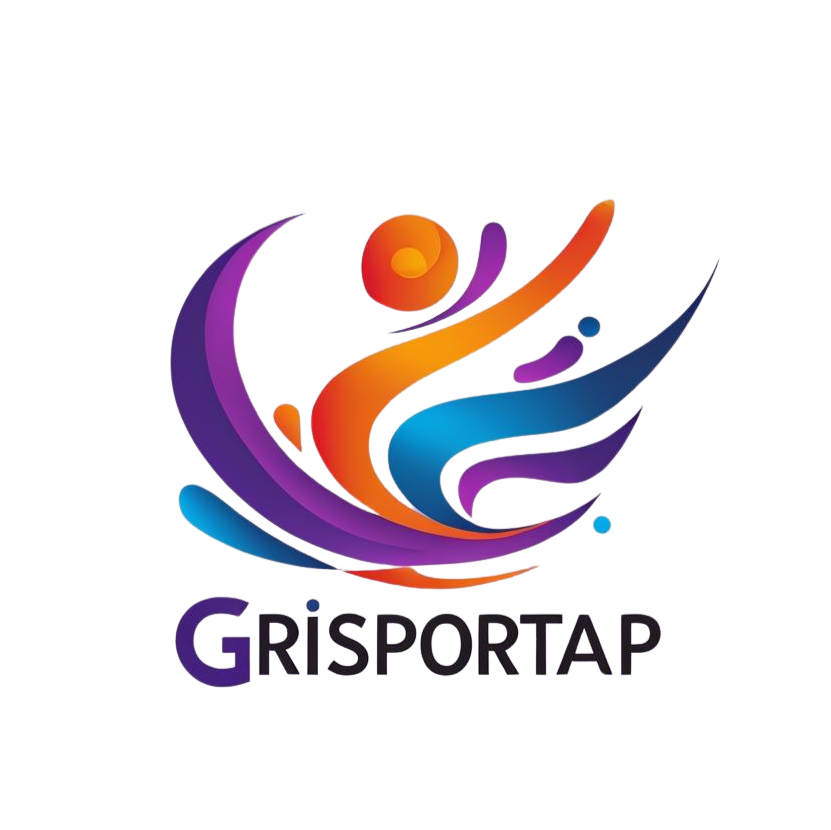Ready to stop guessing and start knowing what truly moves your studio forward?
What if you could turn everyday posts, emails, and ads into clear insights that guide your goals?
You’ll get a friendly, step-by-step guide that avoids jargon and sets realistic expectations.
We show simple metrics you can track across social, email, PPC, SEO, referrals, and direct mail. These metrics tie to your audience, campaigns, and creative choices.
Expect practical tips that match your studio, company, or community program. We use real numbers—like typical email open rates for recreational businesses—to help you plan sensibly.
By the end, you’ll know which KPIs to watch, how to read your data, and what actions to take next.
This guide is educational and inspirational. Test responsibly, learn over time, and seek expert help when you need it.
Introduction: How to measure dance marketing results with clear, simple metrics
You don’t need a data team — just a handful of reliable figures to guide each campaign. This section shows why tracking basic indicators helps studios, companies, and community programs stay aligned with mission, capacity, and seasonality.
Why it matters: Simple tracking keeps your outreach linked to real goals like enrollment, inquiries, and attendance. Combining organic and paid social with email, SEO, and PPC increases touchpoints and encourages sign-ups.
What simple metrics look like in practice
Think weekly checks you can do in minutes: clicks to a trial page, inquiry count, or enrollments per class. These numbers let you tweak headlines, refine a target radius, or shift ad spend quickly.
How this guide helps you act on data
We link a few core metrics to concrete actions. You’ll learn which platform media insights matter and how to avoid vanity numbers that hide true performance.
- Practical: Build quick dashboards and set clear goals.
- Respectful: Keep dashboards simple so staff can use them.
- Sustainable: Small improvements compound into lasting success.
Start with SMART goals that match your dance business model
Start by turning a vague wish for growth into a clear, time-bound objective you can act on. SMART goals are simple: specific, measurable, achievable, relevant, and time-bound.
From “get more students” to “increase enrollment by 10% in six months”
Pick one concrete goal tied to a KPI like trial bookings, enrollments, or attendance. Link that number to your class types and pricing so the target fits your model.
Align goals to audience segments, class types, and seasons
Define goals for groups: age, level, or intent. Adjust targets for back-to-school, recital weeks, and summer camps. This keeps expectations realistic and actionable.
Benchmarks and cadence: weekly, monthly, and quarterly reviews
Set a schedule: quick weekly check-ins, monthly rollups, and a quarterly strategy review. Use past season data as a benchmark and set a modest stretch target.
- Use kpis tied to each goal so the team sees clear performance signals.
- Run micro-tests with creative or offer changes and log the number impact.
- Brief your team so management and staff know how their work links to success.
Define your core KPIs: the essentials you can track today
Pick a few clear kpis that show whether your outreach and operations are working. These should be simple to collect and tied to actions you can take each week.
Reach, engagement, traffic, leads, conversions, and revenue
Reach tells you how many people saw your post or ad. Engagement captures likes, comments, saves, and shares that show interest.
Traffic is visits to your site or landing pages. Track source so you know what drives people there.
Leads are inquiries and trial sign-ups. A conversion is a finished enrollment or purchase. Use basic conversion rates (conversions divided by leads) to check campaign performance.
Community health: retention, attendance, satisfaction, and referrals
Student enrollment is lifeblood: log monthly new and active students by class type and age.
- Retention: returning students ÷ prior session total.
- Attendance: weekly presence—spot slot or season dips.
- Satisfaction: short surveys and reviews for quick insights.
- Referrals: track who came from recommendations (88% of people trust those).
Action tip: Keep this small set of metrics and tie each to a decision — scale successful campaigns, fix weak creative, or pause what drains time. Trends beat one-off spikes.
Website and landing pages: traffic, behavior, and conversion rates
Your website is the hub where traffic converts into action; set it up so each click has a clear path.
Set goals first: create Google Analytics events for trial bookings, contact form submissions, and enrollment checkouts. Label each goal so you can link conversions to specific campaigns.
Set up goals in Google Analytics for trials, enrollments, and inquiries
Record clear goals and tie them to funnel steps. Use event tracking for button clicks and thank-you pages so you know when a conversion occurs.
Track source/medium to see which campaigns drive enrollment
Use UTM tags and source/medium reporting to attribute visits to the right campaign. Compare conversion by source to prioritize spend on high-quality traffic.
Improve conversion with fast pages, clear CTAs, and class-fit info
Speed up mobile pages, compress images, and place one clear CTA above the fold. Add class details—age, level, schedule, and attire—to reduce hesitation.
- Read behavior: bounce rate, time on page, and scroll depth reveal friction.
- Connect tools: link forms to your CRM so follow-ups never slip.
- Test responsibly: run small experiments on headlines and layouts and review KPIs weekly.
No guarantees: these strategies improve performance over time. Use analytics and platform insights to guide decisions, not guesses.
Social media metrics that matter for dance brands
Good social posts tell a simple story; the right metrics tell you who listened.
Start by separating organic signals from paid outcomes. Organic metrics include saves, comments, and shares. Paid metrics focus on cost per result and return on ad spend.
Organic vs paid: engagement rate, saves, shares, and cost per result
Engagement rate helps you compare posts across follower counts. Calculate it as interactions divided by reach or followers.
- Saves & shares indicate long-term interest.
- Comments & DMs offer qualitative audience feedback.
- Cost per result shows what paid campaigns cost to drive trials or sign-ups.
Platform insights: match content to demographics and intent
Teens spend lots of time on social media; parents are active too. Use Instagram for photos and reels, Facebook for native video and groups.
“Boost a high-engagement post to reach lookalike audiences and scale what works.”
Plan posts by funnel stage—awareness clips, nurture stories, and enrollment reminders. Test hooks and lengths lightly each week and log what improves performance.
Email marketing KPIs for acquisition, nurture, and loyalty
Clear email KPIs help you see which messages win inbox attention and which need a tweak.
Focus on a few trackable figures: open rate, click‑through rate, reply rate, and unsubscribe rate. These show whether your audience reads, engages, and stays.
Open, click, and reply benchmarks
Use benchmarks responsibly. DanceStudio‑Pro reports an average open rate of 36.5% and 41.8% for recreational studios.
Compare trends, not single sends. A steady climb in open or click figures is more meaningful than one high campaign spike.
Automations that reduce friction
Set three simple sequences: an acquisition welcome, trial reminders, and reactivation flows for lapsed families.
- Welcome: quick intro + one clear next step (book a trial).
- Trial reminders: parking, attire, arrival tips to cut no‑shows.
- Reactivation: gentle, value‑first offers and easy opt‑out.
Keep lists clean: segment parents vs students, honor unsubscribe requests, and document subject line and send‑time learnings for steady improvement.
PPC and search: paid and organic strategies that scale
A focused PPC plan can put your class offers at the top of search pages when intent is highest.
Use PPC for high-intent queries near your studio and pair it with organic SEO to sustain visibility. Paid ads win immediate attention; organic work builds trust and ongoing traffic.
When PPC makes sense and what drives cost
Bid, ad relevance, and landing page quality control how much you pay and how well a campaign performs. Track ROAS plus cost per lead and cost per enrollment to see true value.
Use intent keywords for sign-ups and apply negative keywords to block poor matches. Structure campaigns by class type or season so reporting stays clear and actionable.
Local SEO: Google Business Profile and trust builders
Complete your Google Business Profile with NAP, hours, photos, and clear categories. Request reviews regularly and reply politely to build visibility and trust.
- Optimize pages: clear titles, headers, and local keywords on program pages.
- Organize campaigns: separate offers, trial ads, and seasonal pushes for cleaner insights.
- Nonprofit tip: eligible 501(c)(3)s can use Google Ad Grants for up to $10,000/month.
“Track ROAS alongside cost per lead so you know whether a campaign truly drives enrollments.”
No guarantees: budget responsibly, test small, and use data to guide gradual scaling and learning.
Enrollment, retention, and attendance: lifeblood metrics
Use small cohort views to spot which age groups and instructors drive steady growth. Track a simple set of metrics monthly to know which classes add students and which need attention.

Cohort tracking by class type, age, and instructor
Group enrollments by class, age, and experience level. This cohort audience view shows where new students stick and where churn appears.
Retention rate = returning students ÷ prior session total. Log that number for each cohort so comparisons are quick and clear.
Attendance trends across time slots and seasons
Watch attendance rates by time slot and instructor to spot schedule wins or weak spots. Compare school calendars, holidays, and seasonal shifts in your data.
- Track enrollment by cohort to find classes that drive sustained growth.
- Flag declining attendance as an early churn signal and trigger outreach.
- Use cohort insights to adjust capacity, curriculum, and staff training for better performance.
“Small operational tweaks often lift overall performance when tied to clear KPIs.”
Customer satisfaction and feedback loops
Feedback that’s quick to give and quick to act on turns casual comments into practical changes. Use short, focused requests so families reply easily and you capture useful information on satisfaction.
Surveys, NPS, and quick forms
Create tiny surveys that ask one or two clear questions and one open suggestion field. Track Net Promoter Score to see loyalty shifts over time. Combine survey responses with basic data so you can find patterns without fuss.
Reviews, response routine, and community stories
Make a simple weekly habit: read reviews, log themes, and reply with empathy. Encourage short testimonials ethically and ask permission before sharing a parent or student story.
- Design brief surveys that invite suggestions you can act on.
- Use NPS to track loyalty and trend it monthly.
- Respond to reviews with clarity and respect for privacy.
- Turn recurring comments into small operational fixes.
Respect consent and store replies securely. Link satisfaction trends to retention and referrals so your team sees how feedback informs better performance. Keep the loop simple, steady, and focused on continuous learning as the path to lasting success.
Marketing campaigns: plan, track, learn, and optimize
Plan each campaign around a single outcome so you can learn fast and act. With one objective, your team focuses effort and your reports clearly show whether the effort is working.
Tag everything: add UTM parameters to every link so analytics and your CRM capture source, medium, and creative. This makes attribution cleaner and follow-ups faster when leads arrive in Lead Center or your CRM.
UTM tags for every campaign and channel
Use a simple naming convention: source, medium, campaign, content. Keep labels consistent across email, social, and PPC so your reports match and you can compare performance by channel.
Creative tests: offers, formats, and messages
Run small A/B tests on headline, image, and offer. Test one element at a time and run long enough to see a trend. Use the internal ad guide for creative tips: how to run successful social ads.
Reinvest in winners; fix or stop underperformers
Define clear thresholds for success. If cost per lead or cost per enrollment meets your target, scale. If not, pause, diagnose, and either fix creative or reallocate budget.
- Single objective: one metric per campaign for easy optimization.
- Track leads: route contacts to a tracker so follow-ups are timely.
- Compare by value: judge channels by cost per lead and cost per enrollment, not clicks alone.
- Keep a learning log: record insights so the next brief is smarter and budgets are preserved.
“Disciplined testing and tidy tracking beat chasing every new tactic.”
Events and performances: measure impact beyond applause
Treat each performance as a mini‑campaign with clear steps to collect contacts and keep momentum.
Before the event, set a short tracking window: check site traffic and inquiry counts the week before and the week after. Add UTMs to every flyer, ad, and RSVP link so you can see event-driven visits in your analytics.
During the activation, use QR codes and short forms at booths and meet‑and‑greet moments to capture emails and phone numbers. Staff should note which talking points or offers spark interest so you can test them later.
After the show, send a warm follow‑up sequence with event photos and a clear next step to try a class. Compare conversion from event leads to your average conversion to judge lead quality and tweak future offers.
- Tag materials and links so UTM data reflects event traffic and campaign source.
- Coordinate social posts, local SEO updates, and short ads to boost attendance and sustain post‑event buzz.
- Document what worked: timing, staffing, and CTAs for continuous improvement.
DanceStudio‑Pro notes: sponsorships and community booths expand reach—use them to collect contacts and support local visibility.
Keep expectations realistic: focus on steady community growth, not one‑day spikes. Small, repeatable follow-ups turn applause into lasting success and useful insights for future campaigns.
Budgeting, CAC, and LTV: finance metrics for sustainable growth
A compact budget view helps you compare channels and avoid overspending. Keep the focus on a few finance figures so you can act fast.
Start simple: cost per lead = total spend ÷ leads. Use that number to compare channels fairly and spot expensive sources.
Calculate cost per lead, cost per enrollment, and payback period
Next, compute cost per enrollment by dividing spend by new enrollments. Compare that to average tuition and fees to see if a channel covers direct costs.
Estimate the payback period: how many months of tuition it takes to recoup acquisition spend. Shorter payback makes scaling safer.
Link LTV to retention and upsells
Map lifetime value (LTV) from average months retained × monthly tuition plus any upsells—workshops, merchandise, or private lessons. Branded point‑of‑sale adds revenue and lifts LTV.
- Referrals: lower CAC and can justify small incentives.
- Retention: even small improvements raise LTV and budget health.
- Capacity: set budgets by expected CAC and how many new students you can serve.
Financial health comes from tracking revenue and expenses and adjusting pricing or costs if profits shrink.
Build a simple finance snapshot you review monthly with your KPIs. Track profitability trends, adjust offers or pricing carefully, and consult an accountant for deeper planning when needed.
Attribution made simple: know what actually worked
Simple attribution shows where credit belongs across your outreach so you can fund what truly supports sign-ups.
Why it matters: last-click often over-credits the final touch and downplays early awareness work.
Last-click limits and using assisted conversions
Look at assisted conversions in your analytics to see which channels chipped in before the final click.
Compare first-touch and last-touch cohorts to balance short-term wins with long-term awareness.
Practical models for small teams
Pick one model you can explain easily: time decay or position-based. Both offer clear, actionable splits of credit.
- Time decay: favors recent touches but still credits earlier steps.
- Position-based: splits credit between first and last touch with a portion for the middle.
- Consistency: use tagged URLs and naming rules so reports stay clean.
Keep it simple. Use attribution alongside parent comments and instructor notes so qualitative signals confirm your direction.
“Avoid chasing precision; aim for directional insight you can act on.”
You’ll use these insights to reallocate small budgets, test changes across campaigns, and update models as seasons and capacity shift.
Data hygiene, privacy, and tool stack setup
Start with clean contact rules so your tools and communications stay reliable and compliant.
Consent and opt-outs: get clear permission at signup and honor unsubscribe requests quickly. Follow CAN-SPAM and similar rules so your email work respects privacy and trust.
Keep forms minimal: ask only for what you need. Secure storage and simple fields cut friction and protect family information.
- Standardize names and UTMs so reporting stays honest and lists stay clean.
- Map your stack: website, analytics, email, and CRM should pass contact data reliably.
- Assign roles: document who owns privacy, backups, and access reviews.
- Backup & retention: set simple policies suitable for small teams.
Respectful communication: contact customers only as often as is useful. Keep messages focused and easy to opt out of.
“When in doubt, consult legal or data professionals to align your approach with local rules.”
Real examples: social, email, and local outreach in action
Real examples show how modest, clear campaigns build notice and sign-ups. You’ll see practical, local versions of big ideas so your team can copy and test them safely.
TikTok challenges and short-form wins
Short videos and simple prompts can boost profile visits fast. Big brands like Chipotle’s Lid Flip and NBA #NBAAllStarDance show how user-generated clips scale reach and spark participation.
Use a safe, studio-friendly challenge with one clear CTA and a branded hashtag.
Referral incentives and direct mail response
Referral offers reward families and track enrollments. DanceStudio‑Pro notes 88% trust recommendations from people they know, so referrals cut acquisition cost.
Pair mailers with QR codes and landing pages: direct mail can drive site visits (57%) and searches (53%).
Email, combine channels, and judge momentum
Write emails that spotlight parent stories and class benefits, not just promos. Recreational studios often see strong open rates, so use that to prompt trials.
- Run a short-form challenge + email reminder for the same week.
- Offer a tracked referral gift for new enrollments.
- Send a mailer with a QR code to a campaign landing page and watch traffic and inquiries.
Adapt big-brand lessons to your budget and keep authenticity, safety, and community first.
How to measure dance marketing results and report findings
A single-page recap makes it easy to spot what’s working and what needs attention this week.
Build a one-page dashboard with weekly highlights
Keep a compact view that covers reach, traffic, leads, enrollments, and revenue. Use simple charts and one-line notes so the page reads fast.
Include weekly highlights: top post, top email, and top source of trials. Add a short row for cohort and retention to keep long-term health visible.
Tell a clear story: goals, results, insights, next steps
Start with the goal for the period and link each KPI to that goal. Then list three quick insights and two recommended actions.
- Snapshot: reach, traffic, leads, enrollments, revenue.
- Highlights: best content, best channel for trials, notable trend.
- Risks & blockers: staffing, low attendance, or tech issues.
- Owners: assign follow-up tasks and deadlines.
Practical tip: archive each week so you can spot seasonal patterns and improvement over time.
“Use Lead Center or your CRM to link contacts and follow-ups so performance is visible and timely.”
No guarantees: this framework helps you learn faster. Monitor regularly, adapt strategies, and involve qualified professionals when you need deeper analysis.
Conclusion
Close with simple routines that help you turn data into steady progress. Keep a short weekly check, log a few key figures, and use that view to guide next steps so your team moves with purpose toward success.
Focus on clear goals and practical strategies. Blend social, email, SEO, PPC, referrals, and direct mail thoughtfully so each channel supports a campaign and your audience sees consistent value.
Use insights from enrollment, retention, attendance, satisfaction, and web analytics to tweak pages, emails, and posts. Protect privacy and honor consent so families trust your communications.
Keep a one‑page dashboard, revisit budgets with CAC and LTV in mind, and experiment responsibly. When you need deeper help, reach out to qualified professionals and celebrate steady success along the way.



